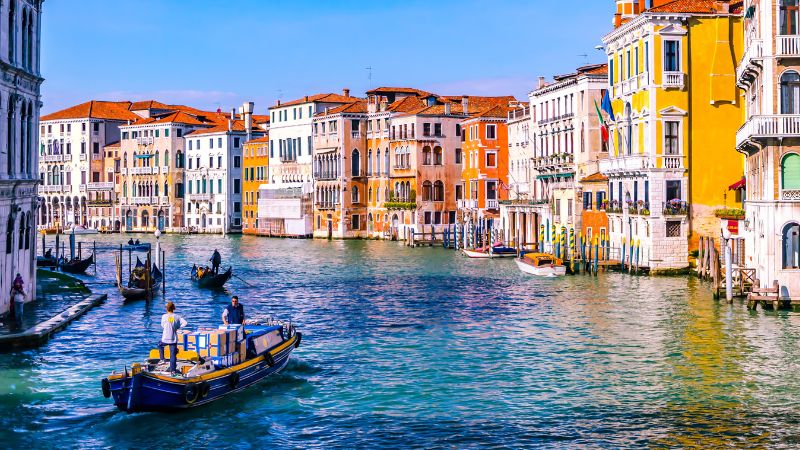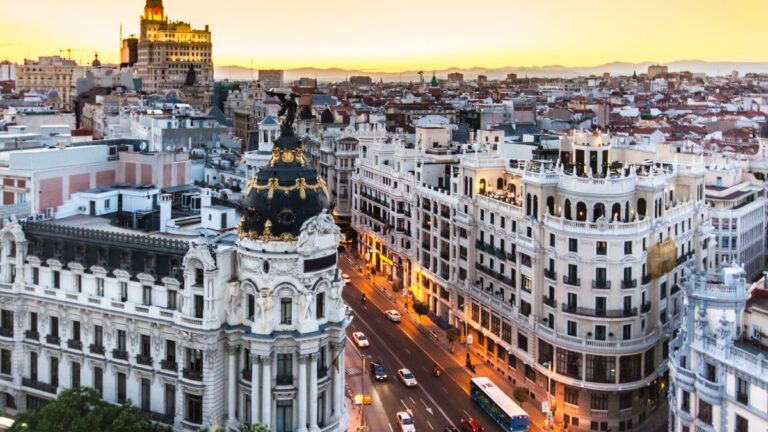Venice Travel Guide: Navigating the Serene Canals and Renaissance Masterpieces

As participants in Amazon Associates and other programs, we earn from qualifying purchases. This comes at no additional cost to you. For more details, see our Affiliate Disclosure.
Venice is a city of enchantment, where the serene canals and remarkable Renaissance art blend seamlessly to create a truly unique experience. As you glide through the waterways in a gondola, the city reveals its timeless beauty and artistic heritage. This guide will help you explore the hidden corners and famous sights of Venice, from its historic architecture to the masterpieces that still resonate with art lovers today.
A Gondola Ride Through Venice: More Than Just a Tourist Experience
A gondola ride through Venice is iconic, weaving through the city’s intricate canal systems, it offers a unique vantage point not just of Venice’s grand architecture, but of its vibrant daily life. Glide past historic buildings and under famous bridges, feeling the pulse of the city from the water. This experience allows you to see Venice as the locals have for centuries, from a gondola.
As you float down the quieter canals, a gondolier might share stories of the city’s past, pointing out hidden gems along the way. These stories add a personal touch that turns a simple boat ride into a memorable journey through history. The gentle lap of water against the hull brings a calm that is hard to find in the crowded streets.
Taking a gondola at sunset offers an unforgettable view as the fading light casts a golden glow over the city. This time of day highlights the romance and mystery of Venice, making it clear why this city has captured the hearts of travelers for generations.
Exploring St. Mark’s Basilica: A Jewel of Venetian Art
St. Mark’s Basilica stands as a testament to Venice’s rich and elaborate history, a magnificent cathedral that has been the city’s symbol of religious devotion and artistic achievement for centuries. Its opulent design and golden mosaics leave visitors in awe, reflecting the wealth and power Venice wielded at the height of its influence.
Inside, the basilica houses a stunning array of Byzantine art, with more than 8,000 square meters of mosaic covering the domes and walls. The gold background of these mosaics illuminates the interior, creating a celestial atmosphere that enhances the spiritual experience. The Pala d’Oro, an exquisite altarpiece embellished with thousands of gems and precious stones, is among the basilica’s most precious treasures.
Visiting during a quieter time can allow for a more reflective experience, away from the crowds. It’s a chance to appreciate the detailed artistry and craftsmanship that have made St. Mark’s not just a place of worship, but a cornerstone of cultural heritage in Venice.
The Rialto Bridge and Market: A Bustling Encounter
The Rialto Bridge is one of Venice’s most famous and oldest bridges, spanning the Grand Canal with shops lining its length. It’s a bustling nexus of activity, both a critical piece of infrastructure and a popular tourist attraction. The bridge’s architecture, with its unique stair-like arch, makes it a favorite subject for photographers.
Below the bridge, the Rialto Market operates as it has for centuries, offering a glimpse into the daily life of Venetians. Here, locals and visitors alike mingle among stalls selling fresh produce, seafood, and Venetian specialties. The market’s vibrant atmosphere is a sensory overload of sights, sounds, and smells, encapsulating the essence of Venetian commerce.
Exploring the area at dawn allows you to see the market come to life, an experience that is as much about absorbing the local culture as it is about shopping. It’s a place to grasp the continuous thread of history that connects modern Venice to its past.
Hidden Art Treasures of Venice: Discover Lesser-Known Museums
Venice is filled with art, and not all of it is housed in the famed galleries. Several lesser-known museums offer a chance to explore deeper into Venice’s artistic heritage without the crowds.
- Ca’ Rezzonico: This museum dedicated to 18th-century Venice gives insight into the opulent lifestyle of Venetian nobility with rooms filled with period furnishings and paintings.
- Palazzo Mocenigo: Home to the Study Centre of the History of Textiles, Costumes, and Perfume, this museum offers a different perspective on the Venetian arts through the lens of daily life and luxury.
- Museo Fortuny: Once the home of the artist Mariano Fortuny, it’s now a museum showcasing his work and his collections that span a broad range of artistic styles.
These museums not only offer quieter alternatives to the more crowded spots but also provide unique insights into the layers of history and creativity that have shaped Venice.
Culinary Delights: Sampling Venetian Cuisine
Venetian cuisine is a delicious journey through the city’s rich maritime history, reflecting influences from around the globe.
- Cicchetti: Venice’s answer to tapas, these small snacks are found in bacari, or bars, throughout the city. Try polpette (fried meatballs) or sarde in saor (sweet and sour sardines).
- Risotto al nero di seppia: This striking black risotto gets its color from squid ink, a common ingredient in Venetian kitchens.
- Frittelle: These sweet fritters are a traditional treat during Venice’s Carnival but can be found year-round in local bakeries.
Eating your way through Venice is as much a part of the experience as seeing its sights. Each dish tells a story of Venice’s past and present, making each meal a discovery.
Quiet Corners: Finding Peace Away from the Crowds
Venice’s charm isn’t limited to its grand canals and palazzos; many of its quieter corners offer tranquility and a chance to escape the bustling tourist paths.
- The island of Torcello: A short vaporetto ride away, this island offers a peaceful retreat with ancient churches and fewer tourists.
- The gardens of the Ghetto Nuovo: Hidden among the historic buildings of the Jewish Ghetto, these gardens offer a serene spot to unwind.
- Sant’Elena: A residential neighborhood that boasts lush parkland and lovely views of the eastern sections of Venice.
Finding these peaceful spots lets you enjoy Venice at a slower pace, making it possible to appreciate the quieter yet equally beautiful parts of the city.
Venetian Glass: The Colorful Craft of Murano
The island of Murano is world-renowned for its glassmaking, a craft that has been perfected here for centuries. Visiting Murano offers an insight into this intricate art form with demonstrations and museum displays. The glassblowers of Murano transform molten glass into stunning works of art right before your eyes, maintaining a tradition that defines the island.
The variety of glass products ranges from delicate jewelry to elaborate chandeliers and sculptures. Each piece reflects the skill and creativity of its maker, often incorporating techniques that have been guarded secrets for generations. The vibrant colors and unique shapes of Murano glass make it a favorite souvenir for visitors.
Exploring the workshops and galleries of Murano not only supports the local artisans but also helps preserve a piece of Venetian heritage. It’s a colorful and educational experience that connects you to the artistic spirit of Venice.
Walking Tour of Venice: Must-See Landmarks
Walking through Venice is the best way to discover its many landmarks, each telling a part of the city’s story.
- St. Mark’s Square: The heart of Venice, surrounded by its most famous buildings and always lively.
- The Doge’s Palace: A symbol of Venice’s power and wealth during the Renaissance, it’s now a museum.
- The Bridge of Sighs: Passing from the Doge’s Palace to the historic prisons, this bridge offers a picturesque view.
- The Campanile: Climb up for a panoramic view of Venice from above.
A walking tour is an active way to engage with Venice’s history and architecture, seeing firsthand the places you’ve read about.
Practical Tips: Getting Around the Floating City
Navigating Venice can be as much an adventure as exploring it. Knowing a few tips can make your travels smoother.
- Vaporettos: Venice’s water buses are a practical and scenic way to get around.
- Walking: Often the quickest and most enjoyable way to explore the compact heart of the city.
- Traghetto: These gondola ferries cross the Grand Canal at several points and are a quick, inexpensive alternative to full gondola rides.
- Footwear: Comfortable walking shoes are a must in Venice’s often uneven and cobbled streets.
Getting familiar with these options helps you move around Venice efficiently, allowing you more time to soak in the city’s beauty and charm. It’s all part of the Venetian experience.






